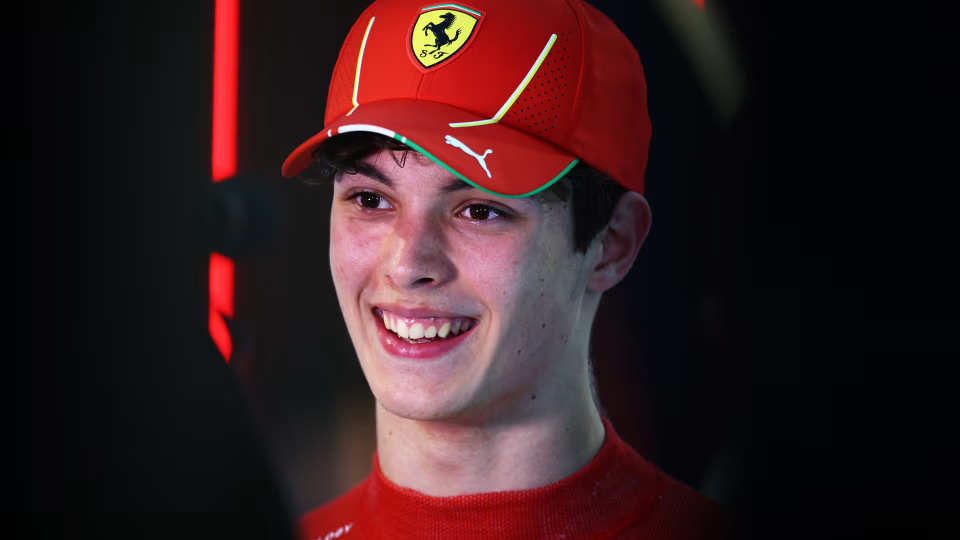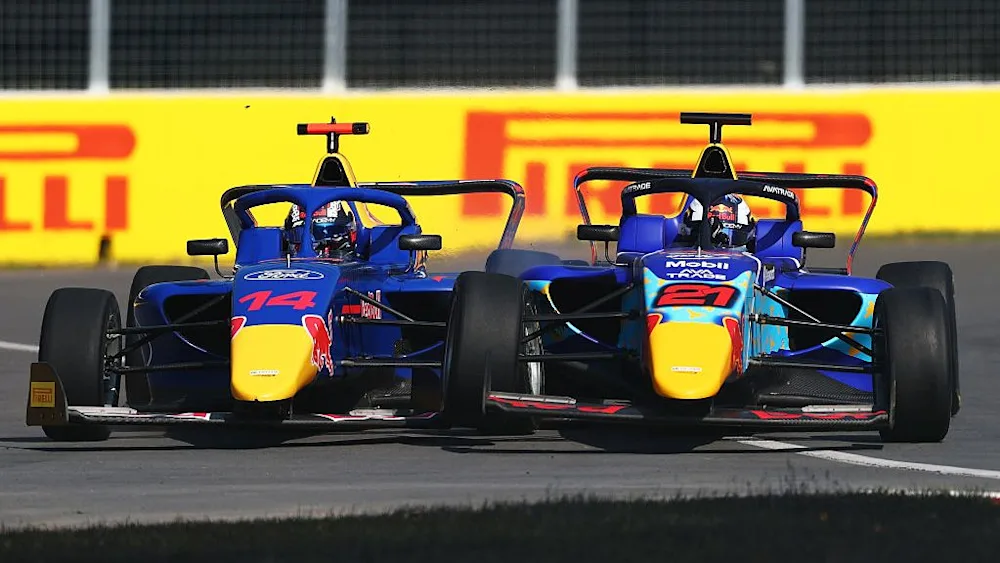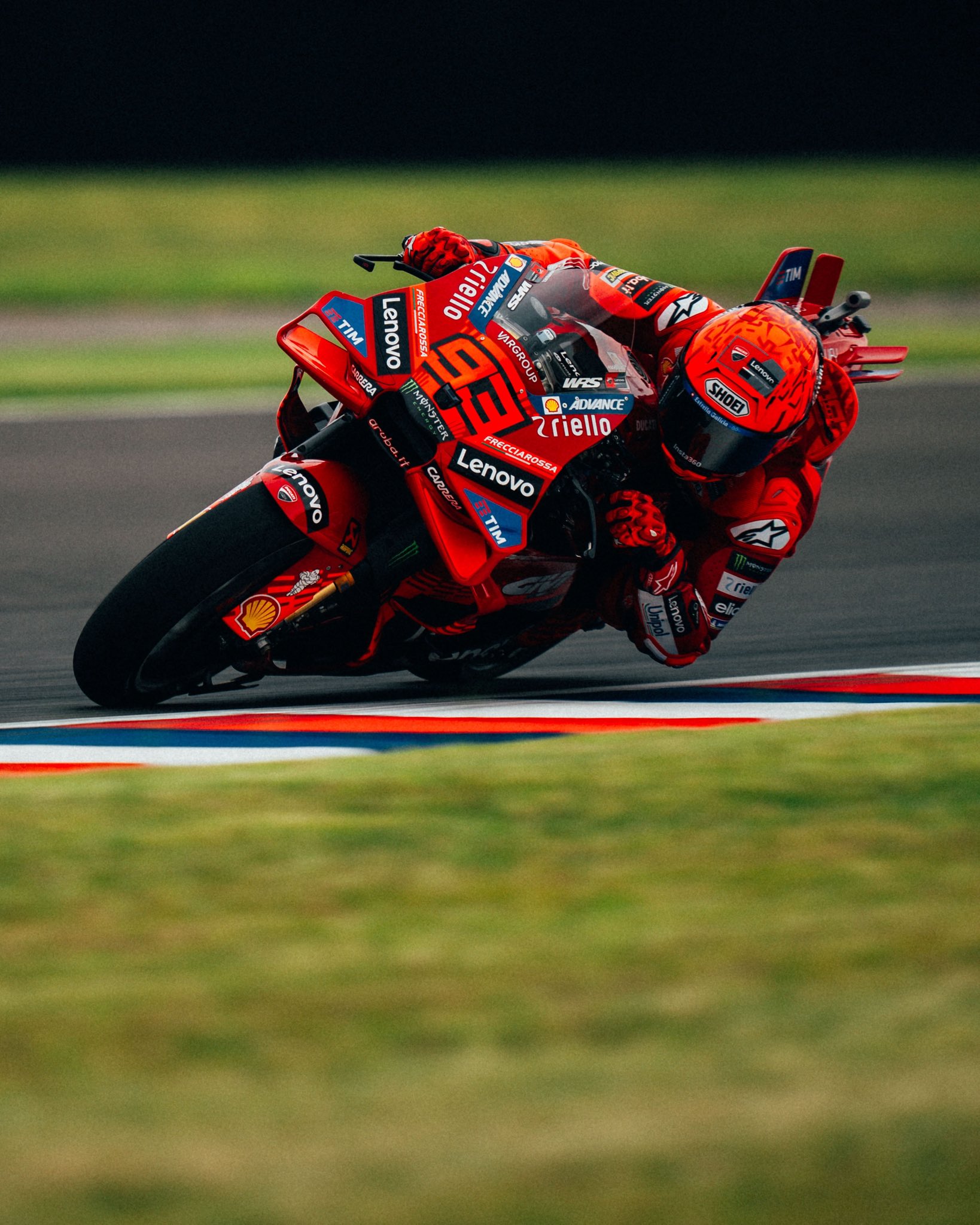Stand by but never still: A reserve driver’s race weekend
- Kavi Khandelwal

- May 29
- 8 min read
Written by Kavi Khandelwal, Edited by Kashish Goel

In a world of over eight billion people, only 20 names line up on the starting grid every race weekend in Formula One. These 20 drivers are warriors of speed, masters of precision and the ones who battle wheel-to-wheel for glory under a million watchful eyes.
However, lurking just outside these top 20 racers is a different breed of drivers. They have the same exacting standards and are meticulously prepared to jump in the cockpit at a moment’s notice. With their achievements and their stories, these drivers operate in the shadows, coming to light only when a team’s regular driver is unable to participate. These are the reserve drivers.
The public perception of the reserve drivers is often dismissive, with statements like “not good enough”, “benchwarmers” and “washed” being thrown around by keyboard warriors. But is this assessment truly accurate?
There are a limited number of opportunities in this sport, and it includes incredibly talented drivers with significant success in junior categories or who have even raced in F1 previously. Some of these talented drivers, however, have to occupy a reserve role. This emphasises the complex and unpredictable dynamics of the driver market. The reserve role position is a consequence of the sport’s inherent exclusivity and not a scoreboard of their talents and abilities.
This piece challenges these prevailing myths and delves into the demanding yet crucial role of being a reserve driver in an F1 team, arguing against the narrative that they are more than just substitutes in the high-stakes world.
Who is a reserve driver?
It is necessary to understand the basic differences between a test driver, a simulator driver and a reserve driver. A reserve driver’s primary responsibility is to be ready to race at a moment’s notice if one of the team’s main drivers is unable to compete. For this quick transition, they must be present at all race weekends while being immersed in the team’s operations and strategies. Reserve drivers might participate in some testing sessions or simulator work, but their core focus remains on being prepared to step into the cockpit whenever asked. This eager readiness is paramount for team continuity.
On the other hand, a test driver concentrates their efforts on the development of the car. They usually participate in pre-season and in-season testing, where they log significant mileage to gather crucial data. They also use different components and car setups to evaluate how to best maximise the pace of the car and help the team.
Lastly, a simulator driver plays an important role behind the scenes, operating the team’s advanced driving simulator. They are responsible for providing detailed feedback to engineers by running countless virtual laps, testing various setup changes and helping correlate simulated car behaviour with the real car’s performance. They mainly explore different developmental paths and work to optimise the car setups efficiently.

Several prominent drivers exemplify the need for reserve drivers in F1. The most recent success story is of Oliver Bearman. He was the reserve driver for both Scuderia Ferrari and Haas F1 Team. He achieved points on his debut when he filled in for Carlos Sainz at the 2024 Saudi Arabian Grand Prix, securing seventh place.
His performance in Azerbaijan and Brazil when he stepped in for Kevin Magnussen was also noteworthy. This led to further confidence in a full-time promotion to Haas. His rapid ascent to F1 showcases the potential for immediate impact and career progression once given the chance to drive.
Felipe Drugovich is another example. The young Brazilian holds the reserve driver position for Aston Martin. Drugovich, who won the 2022 Formula Two championship, is unable to secure a permanent F1 seat. This underscores the intense competition in the driver market for the 20 F1 seats.
The story of Valtteri Bottas provides a compelling perspective on the role. A former pillar at Mercedes, racing alongside Lewis Hamilton and securing 10 Grand Prix wins, he returned to the Silver Arrows in 2025 as a reserve driver after the departure from Kick Sauber and being unable to secure a full-time seat for 2025.
Bottas proves that reserve drivers' roles are not solely for young or unproven talent. It can also be a place for experienced, race-winning drivers who can offer constructive insights based on their wealth of experience and strategic understanding. Additionally, the Finnish driver offers invaluable mentorship to the young driver line-up of the team, especially rookie Andrea Kimi Antonelli, with crucial strategic insights based on his years of experience.

Being a reserve driver can also act as a vital springboard for a successful career. Oscar Piastri spent the 2022 season as Alpine F1 Team’s reserve driver after leaving F2 as the reigning champion. While his F1 race seat was not immediately available, the prominent position kept him highly visible in the F1 community, to remain at the forefront of consideration for other teams, and next in line for any openings.
Similarly, Liam Lawson did not follow the conventional path of racing in F2 to F1. Instead, he was Red Bull Racing’s simulator driver as well as reserve driver. He was trained behind the scenes to be prepared for any opportunity. When the opportunity did arise, Lawson stepped in and proved that he belonged in F1. He secured a full-time seat at Red Bull Racing for the 2025 season, but got demoted after only two races to the sister team, Racing Bulls.
These instances show the many motivations behind drivers' reserve status and the impact it had on their professional paths.
Pre-weekend preparation
The preparation of a reserve driver is as intense and demanding as that of a race driver. They must also spend a significant amount of time on focused simulator work to track the car development, setup optimisation, and driver preparation.
They must familiarise themselves with the track and car behaviour, which is easy enough for drivers who have experience in the F1 racing world, but extremely difficult for new drivers. They must adapt to the circuits through the simulator before they jump into the real thing. Reserve drivers must also participate in data sessions with engineers to analyse performances and find areas for improvement. Even more challenging for a driver, let alone a reserve, is to adapt their driving style to mimic that of the team’s racing drivers for simulator data accuracy.
Focusing on the physical training of a reserve role, it demands exceptional physical fitness to withstand the G-force experienced during acceleration, braking, and cornering. Their training is on par with the racing drivers. Reserve drivers, like Bottas, must continue their rigorous training for neck strengthening, cardiovascular workouts for stamina for each demanding race and overall strength training to counter the physical pressure of high speeds.
The psychological preparation of a driver, reserve or otherwise, is as important as their physical or technical preparation. A reserve driver must have the mental fortitude to always be “ready” to race. This means that they must be immensely focused and have the ability to manage the psychological impact of training and preparing without having the regular rewards of actually fighting on track.

As Bottas stated, “My most important role is to be ready as a driver. [...] I need to be able to jump in the car and perform straight away.” This powerful statement truly captures the core of a reserve driver’s pre-weekend preparation. It demonstrates the commitment they have to being physically, technically and mentally prepared to race at a moment’s notice.
The Race Weekend
The race weekend, from Friday to Sunday, brings a unique experience for a reserve driver. It includes a blend of intense observation, behind the scenes contribution on strategies and car setups and constant anticipation of when they might be called to fill in for a driver.
Friday
Friday brings forth two one-hour free practice sessions (FP) where reserve drivers are actively involved with the team. They participate in team briefings, listening intently to the feedback given by each driver and understanding the analysis given by the engineers on the car's performance. These reserve drivers contribute to crucial data work, dissect telemetry and identify areas where the car’s setup can be improved. Many teams have developmental plans or regulatory requirements set that allow reserve drivers to drive in FP1 in a particular track. This invaluable track time in the current car allows the team to gather additional data and evaluate the reserve driver’s capabilities.
Saturday
On Saturdays, the schedule includes a final one-hour free practice session and qualifying, which sets the starting grid for the race. During this time, reserve drivers often continue their simulator work, whether it is onsite at the track or remotely at the team factory. This provides vital strategy support by running virtual race scenarios to fine-tune the team’s strategies for qualifying and the main race. However, the most significant aspect of Saturdays for a reserve driver is the mental preparation and readiness that is required in case of a sudden call-up.

Sunday
Race day is full of waiting for a reserve driver. They are required to be on standby, meaning they must always be present in the garage and ready to step into the car if needed. Reserve drivers also take on other roles during this day, whether it is assisting in media or PR, where they engage with fans and sponsors. They spend their time observing the race strategy unfold, supporting the team from the garage. Having a reserve driver present helps gain an additional set of eyes on the track and the data as they learn valuable lessons about race management and strategy.
Life on stand by: misunderstood but vital
Reserve drivers are often misunderstood, yet they are undeniably vital to the functioning of any successful team. These are top-tier talents and incredibly skilled individuals. Unfortunately, due to the limited grid of only 20 seats, they find themselves without a permanent place in the starting lineup. Their lack of regular race drives is not a reflection of their ability but a consequence of the fiercely competitive nature of this sport.

For instance, Franco Colapinto was given the opportunity to race for Williams Racing in the latter half of the 2024 season. He impressed the paddock with his strong performances and multiple point finishes. This showcased his latent talent and readiness, which highlights the quality of reserve drivers often waiting in the wings.
The gap between the public visibility of the reserve drivers and their actual contribution has led to many unfair narratives regarding their abilities as drivers. People forget, or rather don’t understand, how critical they are to a team’s success, providing essential support in numerous areas. They do so despite their contributions being largely unseen and unrecognised by the wider audience.
The bigger picture
The extensive hours that reserve drivers put into the simulators are invaluable for car development. It provides crucial feedback to engineers and helps them to refine new components and setups. They contribute to strategy refinements, participating in everything from team meetings, analysing data, to running simulations of multiple race scenarios. Reserve drivers contribute to overall team culture, providing support and an additional perspective.
They bridge the gap between factory work and race performances. They learn and implement their knowledge of translating theoretical data and development into real-world feedback to make sure that the team’s efforts lead to tangible improvements in performance. From a career perspective, to be a reserve driver for any team in F1 is a pivotal step. The experience and exposure gained can open doors to long-term racing careers in many other prestigious motorsport series.
The current F1 online fandom plays a significant role in shaping public perception. A driver’s worth is frequently judged by their presence on the starting grid. This focus on grid presence tends to overshadow the critical contributions made by reserve drivers and these skewed perceptions unfairly diminish the value and importance of these highly skilled individuals within the F1 ecosystem.
It is time to reframe the conversations that surround the F1 reserve drivers. They are not “leftovers” or “rejects”; they are relentlessly ambitious, caught in a bottleneck system, with more talent than seats. Reserve drivers often represent the future stars of the sport, honing their skills as they patiently wait for their opportunity to shine. They are a valuable strategic asset for their teams, and they contribute significantly to car development, strategy and overall performance. Reserve drivers may not be in the car at the starting line of the race but they are always a part of the drive.











Comments